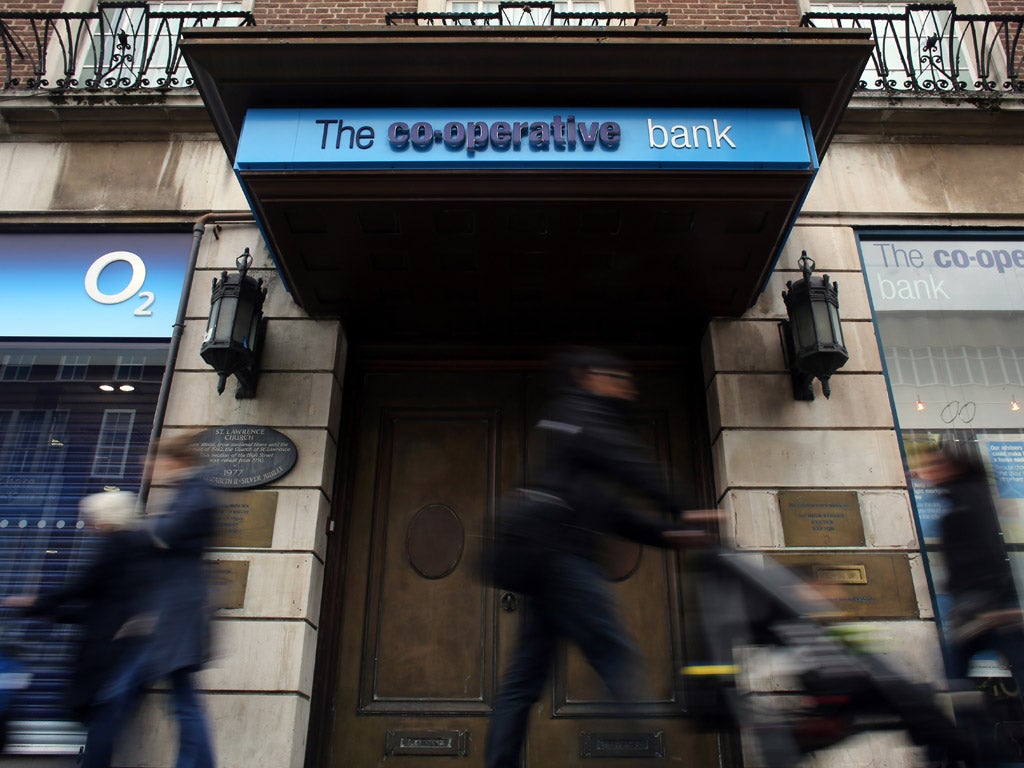Co-op structures don’t solve all management issues
We must make the shareholder-owned model work as well as possible


So cooperatively owned institutions are just as capable of making a mess of their affairs as shareholder-owned ones. The Co-op Bank is managing to avoid a bailout by the Government but it has to raise more capital by floating a quarter, or thereabouts, of its shares on the stock exchange and by applying a “haircut” to some of its bondholders. That innocuous word, so beloved of the financial community, means that people who put £1,000 of their savings into a bank’s bonds rather than a deposit account will be lucky to get £700 back.
It is a sad story but one that is part of a bigger, sadder story. The Co-operative Bank goes back to 1872, when it was the deposit and loan-making arm of the Co-operative Wholesale Society, during the great 19th century burst of mutually owned organisations. The building societies, most of the mutually owned life-assurance companies, the Trustee Savings Banks and the co-op movement itself all go back to those days. You can see the attraction. Instead of being owned by a greedy family or shareholders only interested in dividends, the people who used the services of the organisation reaped the benefits of ownership. It was a model that worked well for more than a century.
And now, in the space of less than a generation, it is largely gone. There are some building societies, led by the great Nationwide; there are some mutual life companies; there is the Co-op; and there is John Lewis. But the balance has shifted radically away. Of all the building societies that were floated, not one is now an independent entity. Most of the mutuals have been bought up, while Equitable Life collapsed. In the 1950s, the Co-op had nearly a third of the UK food business; now it is less than 10 per cent.
For a while, it looked as though the little “ethical” bank would buck the trend. It shot up in size by taking over the Britannia Building Society and was about to grow yet more by buying 631 branches from Lloyd’s Bank. Now it will never be the new force in British banking that people had hoped. We don’t know the full story but it looks as though duff loans by Britannia have been the main thing that has undermined its capital base. Not for the first time has an ill-judged takeover brought a bank to its knees.
So what have we learnt? There seems to me to be one huge lesson, which has a lot of implications. That lesson is that the world has to make the shareholder-owned model work as well as possible. It is the dominant model for ownership of large enterprises, and becoming even more global as it spreads in the emerging world.
We know that government ownership does not work, or at least that it is very hard to make it work well. We cannot expect any real revival of the cooperative movement. There will be experiments and more power to them, but I cannot think of any country where new co-ops are being formed on a significant scale. Family ownership may well continue to grow, particularly in the emerging world, and that has some advantages. Families can plan long-term. But the problem there is how to share the wealth more widely. And private equity will probably grow, too, because it is nimble and can pick up opportunities more swiftly that mainstream quoted companies. But that form of ownership excludes small investors.
So selling off part of the Co-op Bank to the public is not just the best way of rescuing a troubled bank. It also carries the message that extending and improving shareholding ownership is the best way of spreading the wealth that large companies generate to savers worldwide. It is, for all its shortcomings, the best system we have. We just have to make it work better.
The revival’s in the detail
The buzz word is “tapering” and we are going to hear a lot more of it – we may even hear more today from Ben Bernanke, the chairman of the Federal Reserve Board. The issue is how swiftly will the Fed taper off its purchases of US government securities as it reduces the US version of quantitative easing. The target is to get unemployment down to 6.5 per cent, which would be regarded by the Fed as an acceptable level, and the general understanding is that the exceptional monetary measures will continue until then. But you would not want suddenly to go from full pump-priming to stop in one jump, so the idea is that the getting back to normal will come in stages. The detail – and the market’s understanding of that detail – matters a lot.
To set this in context, look at where the world is now. We are gradually getting back to normal as far as fiscal policy is concerned. Deficits are being corrected, even in the US. You can have a debate about the way this is to be done and the pace, but there is no debate about the need for fiscal discipline. What the world is just starting, and this tapering stuff is about this, is a debate about the way we get back to normal on the monetary side. That is going to happen, but we know little about the speed and nature of what will be done. The talk of tapering shows the debate has begun.

Join our commenting forum
Join thought-provoking conversations, follow other Independent readers and see their replies